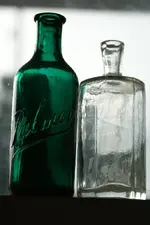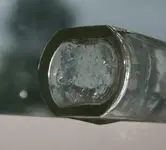gleaner1
Silver Member
- Joined
- Feb 1, 2009
- Messages
- 4,495
- Reaction score
- 1,039
- Golden Thread
- 0
- Location
- Gateway to the 1000 Islands
- Detector(s) used
- Sometime(s)
- Primary Interest:
- Other
- #1
Thread Owner
The clear cologne has an interesting "sand" or "chip" pontil, the only one of this type I ever dug. Harry Pristis, is there a proper name for this pontil?? Thanks, gleaner1





